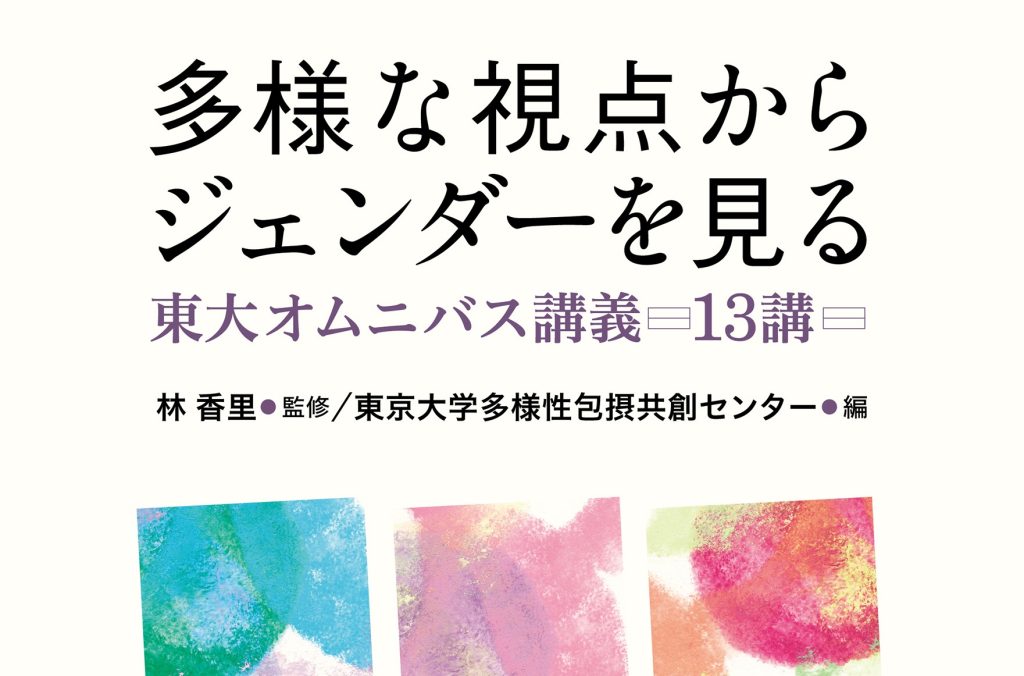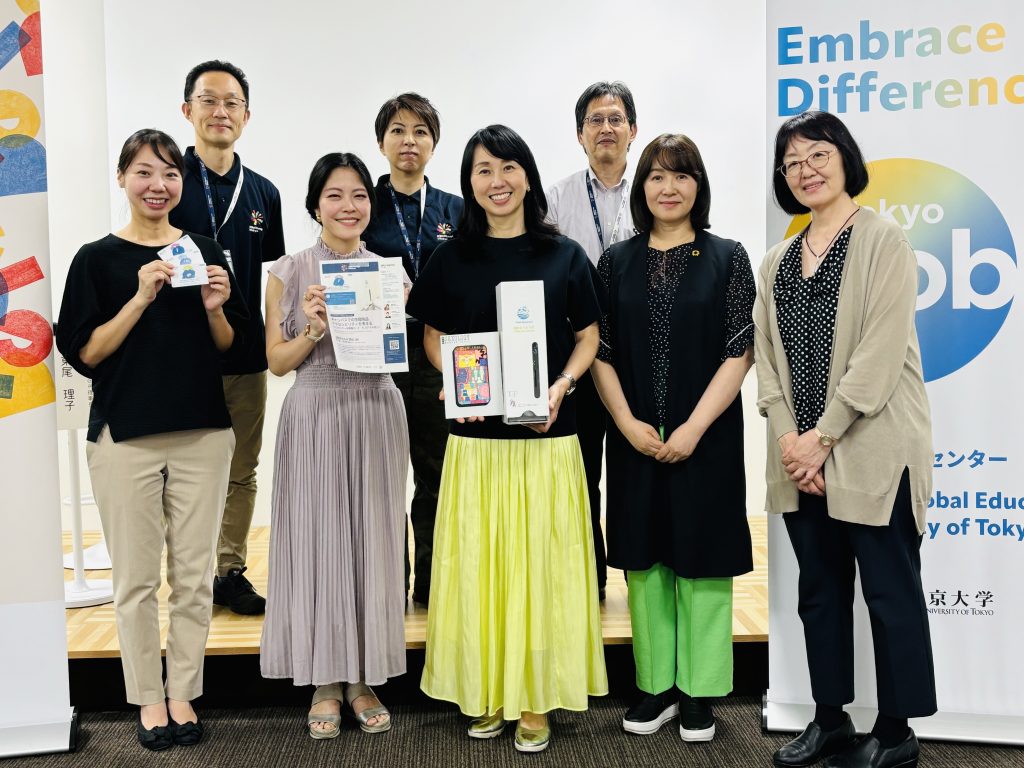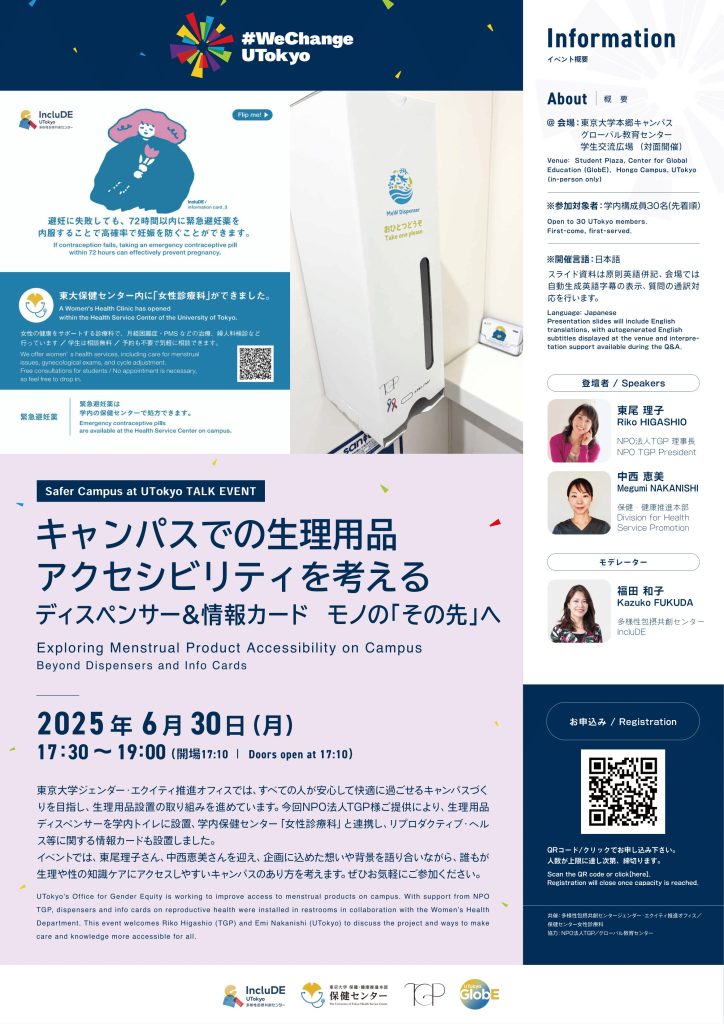Outline
UTokyo Gender
Collaborative Reform
#WeChange Launch
2022-2027
The University of Tokyo has launched the “UTokyo Gender Equity Initiative #WeChange,” an initiative to develop female leaders.
The initiative aims to raise awareness among all members of the University, including faculty, staff, and students, as well as double the rate of increase of female faculty compared to the past decade by recruiting approximately 140 female professors and 160 female associate professors. This equates to one quarter of all new appointments and promotions to professor and associate professor positions-a total of approximately 300 female out of 1200 newly appointed faculty members by AY2027.
In September 2021, the University of Tokyo announced the UTokyo Compass "Towards a Sea of Diversity: A Future Created by Dialogue" as its basic policy regarding the philosophy and direction the university should take. Under the UTokyo Compass, in June 2022, the University of Tokyo released the University of Tokyo Diversity and Inclusion (D&I) Declaration, and has been working to realize diversity and inclusiveness.
In order to steadily implement these principles and the contents of the Declaration, we applied for the "Initiative for Realization of a Diverse Research Environment (Female Leader Development Type)," a fiscal 2022 project subsidized by the Human Resources Development Fund for Science and Technology, and in October 2022, we were selected as a new institution to participate in the project. Under this project, we have launched the "UTokyo Gender Collaboration Reform #WeChange" program to develop female leaders.

Target

01
Foundation development
for Gender Equity Initiative

Raise awareness among all members of UTokyo,
including faculty, staff, and students.
- Implementation of gender justice training for faculty and staff
- Provide training for all faculty and staff members as well as training targeted at specific members of UTokyo, such as deans of faculties, directors of institutes, and other management staff.
- Education of gender justice for students
- Create gender-related classes and promote the visualization of gender-related courses.
- Visualization of male and female research activity data
- Promote the visualization of researchers of UTokyo and their research results.
- Support for the promotion of work-life balance
- Enhance the management of on-campus day nurseries, the deployment of support staff for researchers (applicable to both female and male faculty members), etc.

02
Seamless career development for female researchers from graduate to senior management level

Increase the number of females at all levels, from young researchers
to faculty members to top management positions.
- Support for the development of young female researchers’ skills
- Expand the support for the submission of papers and participation in international conferences.
- Training courses to foster research team leaders
- Acquiring the skills necessary to become a higher-level position and lead a research team
- Leadership development programs for female faculty members
- Acquire senior-level skills for university management.

03
Rapid increase in female faculty

Double the rate of increase of females in senior positions;
increase the ratio of female faculty members to 25%
and that of female Ph.D. recipients to 30%.
- Enhancement of programs to accelerate the increase in the number of female faculty members (professors and associate professors)
- Support personnel costs for professors and associate professors for a given period.
- System for the recruitment of role model female faculty members
- Bring female professors to UTokyo with a high salary exceeding the conventional wage standards.
- Meeting to discuss a five-year plan* to accelerate the increase in the number of female personnel in faculties and institutes
- Establish a meeting for vice deans or similar positions of faculties and institutes to discuss the measures to promote the recruitment of female faculty members.
* “Five-year plan to accelerate the increase in the number of female personnel in faculties and institutes”: Beginning in AY2022, UTokyo’s faculties and institutes are each drawing up a plan for gender equality initiatives in personnel and other areas to be carried out over a five-year period. Each faculty and institute formulates a scheme for increasing their number of female faculty members and developing an environment that will enable such an increase, and shares its experiences with other faculties and institutes.
This target has been set based on the goal of increasing the ratio of female faculty members (professors, associate professors, lecturers, and assistant professors including specially appointed professors) to 25%, which is referred to in UTokyo Compass and the 4th Mid-term Goals and Mid-term Plans. Accordingly, UTokyo aims to double the rate of increase of females in senior positions (professors and associate professors excluding specially appointed professors). Consequently, the number of female faculty members to be recruited by AY2027 will significantly increase to 141 for professors and 165 for associate professors—the most ambitious target and action plans ever adopted since the foundation of UTokyo.
In UTokyo Compass and the 4th Mid-term Goals and Mid-term Plans, UTokyo has set the goal of raising the ratio of female faculty members (professors, associate professors, lecturers, and assistant professors) to 25% by AY2027. Part of the concrete strategy for achieving this goal is Target III, which is to be supported by Targets I and II.
Under Target III, UTokyo will seek to double the rate of increase of females in senior positions (professors and associate professors) compared to the previous 10 years. This equates to one quarter of all new appointments and promotions to professor and associate professor positions, and will result in a large number of females taking up such positions: 141 professors and 165 associate professors (excluding specially appointed positions) in the six years to AY2027 alone.
At present, around 200 individuals are appointed to professor and associate professor positions each year, including internal promotions, but only around 35 of these are females. The three initiatives under Action Plan III seek to raise this number by a factor of 1.4 to around 50 per year. Over a six-year period, this should result in a total of 300 females (900 men) among the 1,200 new appointments to professor and associate professor positions.
If implementation proceeds according to plan, the overall number of female professors and associate professors is expected to reach 400 out of a total of 2,300 by the start of 2028.
Moreover, by ensuring that one third of early-career faculty (lecturer and assistant professor) appointees are female and appointing a similar proportion of females to specially appointed faculty positions, UTokyo aims to achieve the UTokyo Compass goal of raising the ratio of female faculty members to 25%. This also accords with the goal of having females account for 30% of new research appointments, as stated in UTokyo Compass and the University of Tokyo General Employer Action Plan.
Most of these efforts are targeted at females, but the minority-friendly environment built through these efforts will certainly benefit all University members. Through “UTokyo Gender Equity Initiative #WeChange,” we will steadily create “a university that anyone in the world would want to join”.






